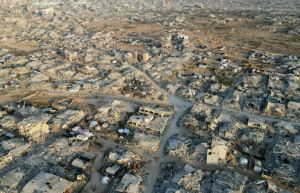Himalayan glaciers are continuously shrinking and even if the climate remains the same it's still not likely to hold up, unless there is a double rate snowfall which is hypothetical.
Brigham Young University geology professor Summer Rupper's findings which are also published in Geophysical Research Letters show that even if the temperature remained consistent, it is likely that at least 10 percent of Bhutan's glaciers would disappear in a few decades resulting 30 percent of water coming from these glaciers will stop.
"These particular glaciers have seen so much warming in the past few decades that they're currently playing lots of catch up," Rupper said in a report from Science Daily. "Much of the world's population is just downstream of the Himalayas. A lot of culture and history could be lost, not just for Bhutan but for neighboring nations facing the same risks."
Many factors such as wind, humidity, evaporation but most importantly increasing temperatures are the main reason for the glacier retreat. This will result in floods and will create an imbalance which will take decades to recover.
Rupper's demonstrated the future impact even if the temperature rises by just 1 degree Celsius. It may increase the risk of Bhutanese glaciers to shrink by 25 percent instead of 10 percent and annual melt water flow will drop by 65 percent instead of 30 percent. It's more than a double impact with just an increase of 1 degree Celsius.
Rupper's and BYU graduate students Landon Burgener and Josh Maurer joined researchers from Columbia University, the Lamont-Doherty Earth Observatory, NASA and Bhutan's Department of Hydro-Meteorological Services to make more specific predictions.
They trekked to one of the most remote locations with blocks of ice and placed a weather station and monitoring equipment which could help further in gathering real time data says a report published in Science Daily.
"It took seven days just to get to the target glacier," Rupper said. "For our pack animals, horsemen and guides, that terrain and elevation are a way of life, but I'll admit the westerners in the group were a bit slower-moving.
"They could potentially have a better idea of where best to fortify homes or build new power plants. Hopefully, good science can lead to good engineering solutions for the changes we're likely to witness in the coming decades," he said.
© 2025 HNGN, All rights reserved. Do not reproduce without permission.








